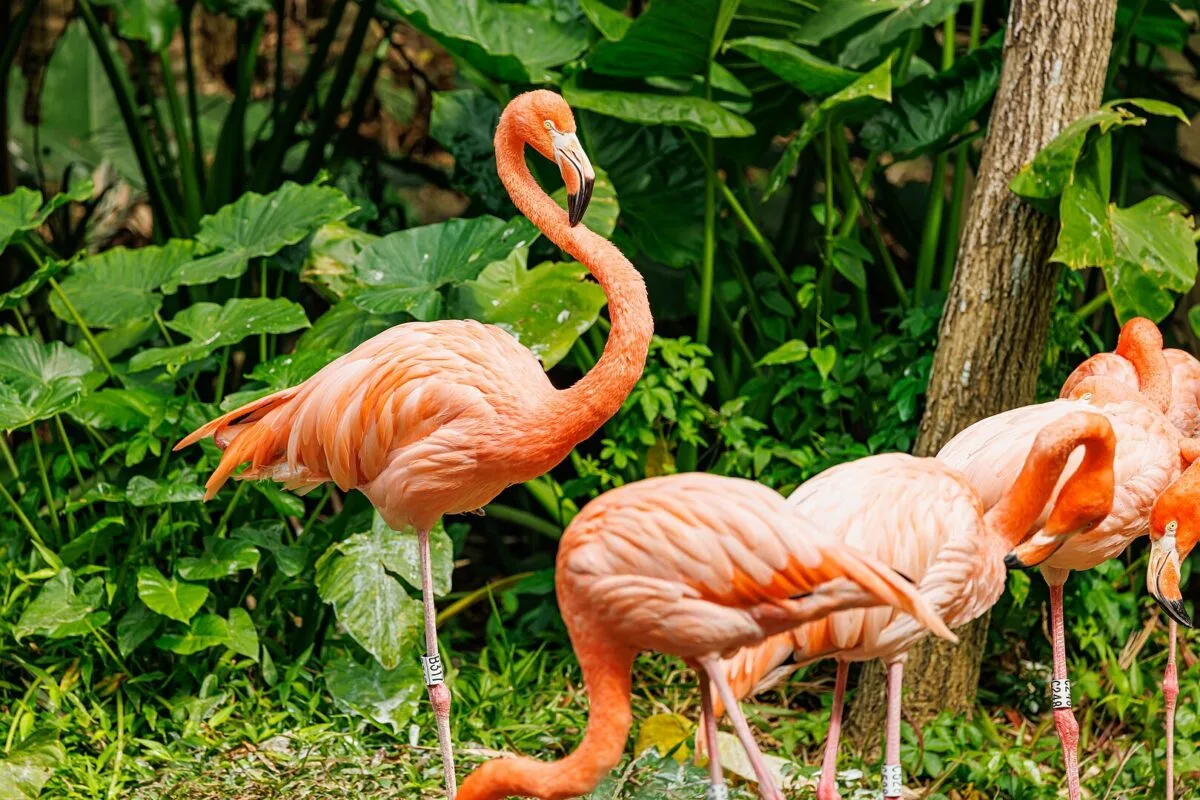The immense diversity of the natural world never fails to astound us, and one of the most spectacular examples of adaptation is the long neck present in many animal species.
Animals with long necks can reach food sources, defend themselves, or attract mates, among other things.
In this blog post, we’ll explore the top 10 species that have evolved this unique trait as we dig into the fascinating realm of creatures with long necks.
1. Giraffe
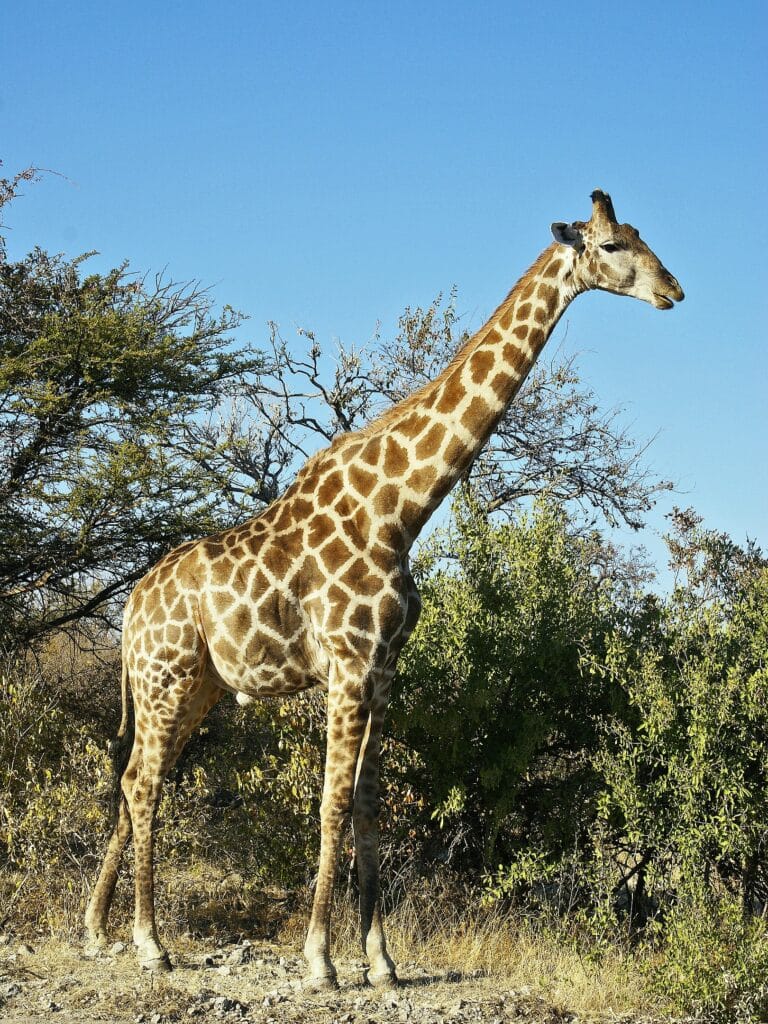
The Giraffe is a magnificent marvel of the animal kingdom, standing at a towering height and with a lengthy neck. These majestic beings, the tallest land mammals, have a neck that may grow up to six feet.
Seven extended cervical vertebrae, each averaging about 10 inches, allowing the Giraffe to have such a long neck. Because of their amazing adaptation, Giraffes can acquire leaves from towering trees that are out of reach for most other herbivores.
Their skilled tongues, which may be up to 18 inches long, are used to remove leaves from branches precisely. The long neck also acts as a lethal weapon in male-male combat situations where they engage in a vicious display known as “necking.” The
Giraffe’s unusual neck makes feeding easier for them and elevates them to the status of an iconic representation of the African savannah.
2. Alpaca
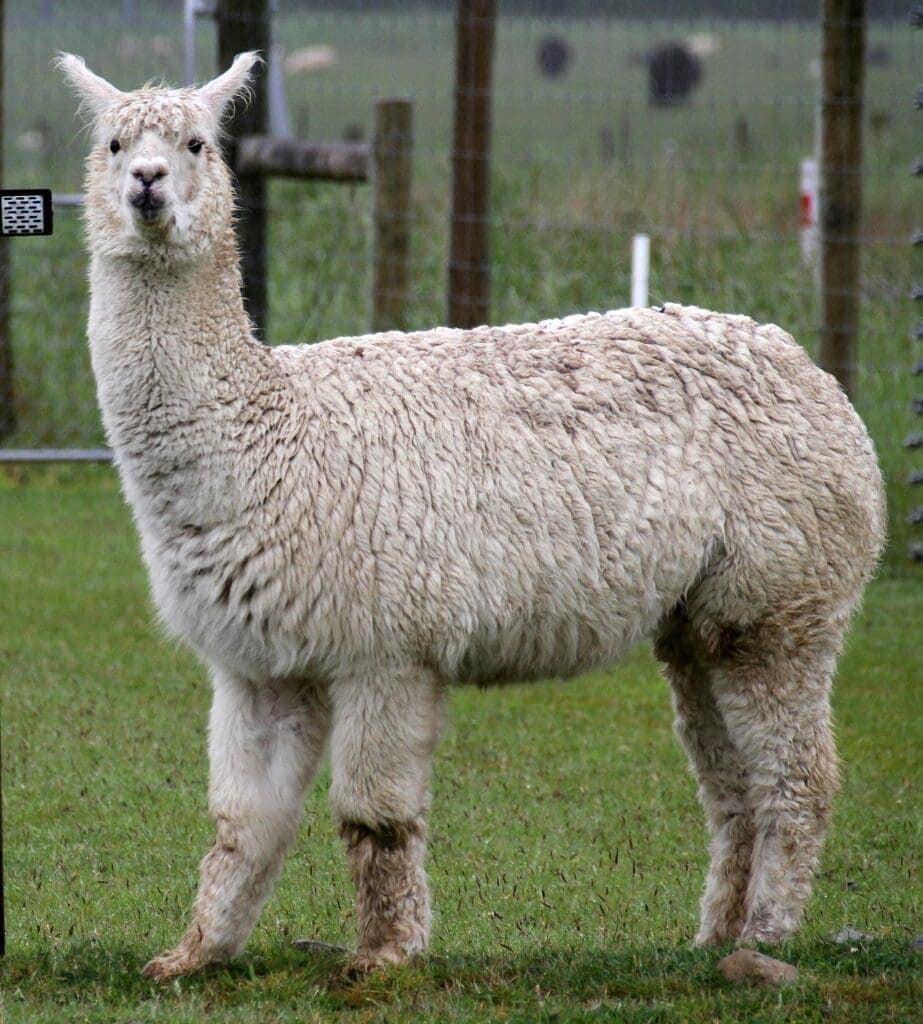
This domesticated member of the camelid family is indigenous to the high altitudes of the Andes Mountains and is distinguished by its long, slender neck. These herbivores’ long necks are an essential feature that allows them to graze on vegetation in rocky terrain.
Alpacas can reach for food sources that grow on steep hillsides or high-altitude meadows thanks to their three-foot-long necks. Thanks to their flexible necks, they can efficiently browse while consuming grasses, herbs, and leaves. The alpaca’s neck is important for social connections and communication. Males may raise their necks upward during combative interactions to emphasize height and power.
Generally speaking, the alpaca’s long neck shows its ability to adapt to challenging mountain habitats.
3. Swan
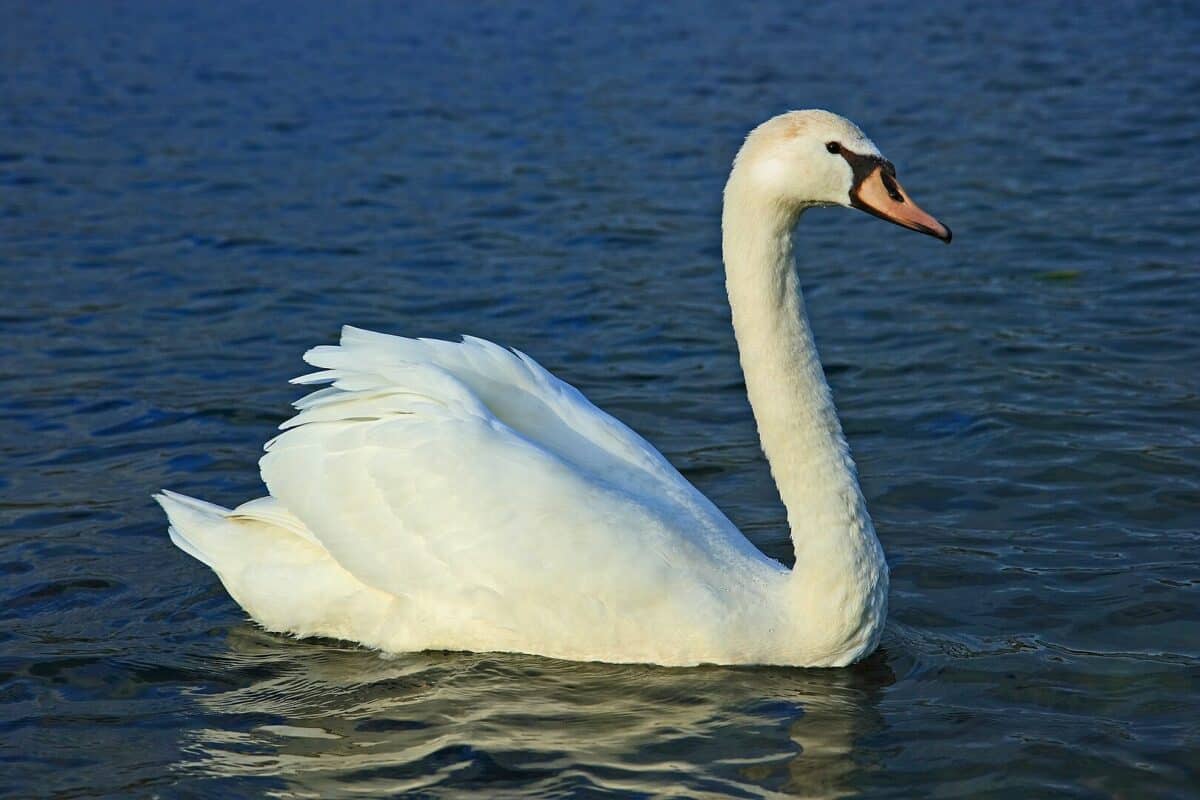
The Swan captivates us with its long, curving neck and attractive, graceful appearance. These stunning birds may reach neck lengths of up to 1.5 meters, which enables them to thrive in aquatic habitats.
Swans eat aquatic plants, tiny fish, and insects while using their long necks to reach submerged flora and crustaceans. They can easily float through the water, gracefully bending and reaching for prey, thanks to their flexible necks. Additionally, the Swan’s neck is useful and a sign of hostility and courtship. Swans frequently twist their necks into graceful S-shapes while performing courtship rituals with their partners.
The Swan is a unique animal to observe in nature because of its long neck, which embodies beauty and practicality.
4. Flamingo
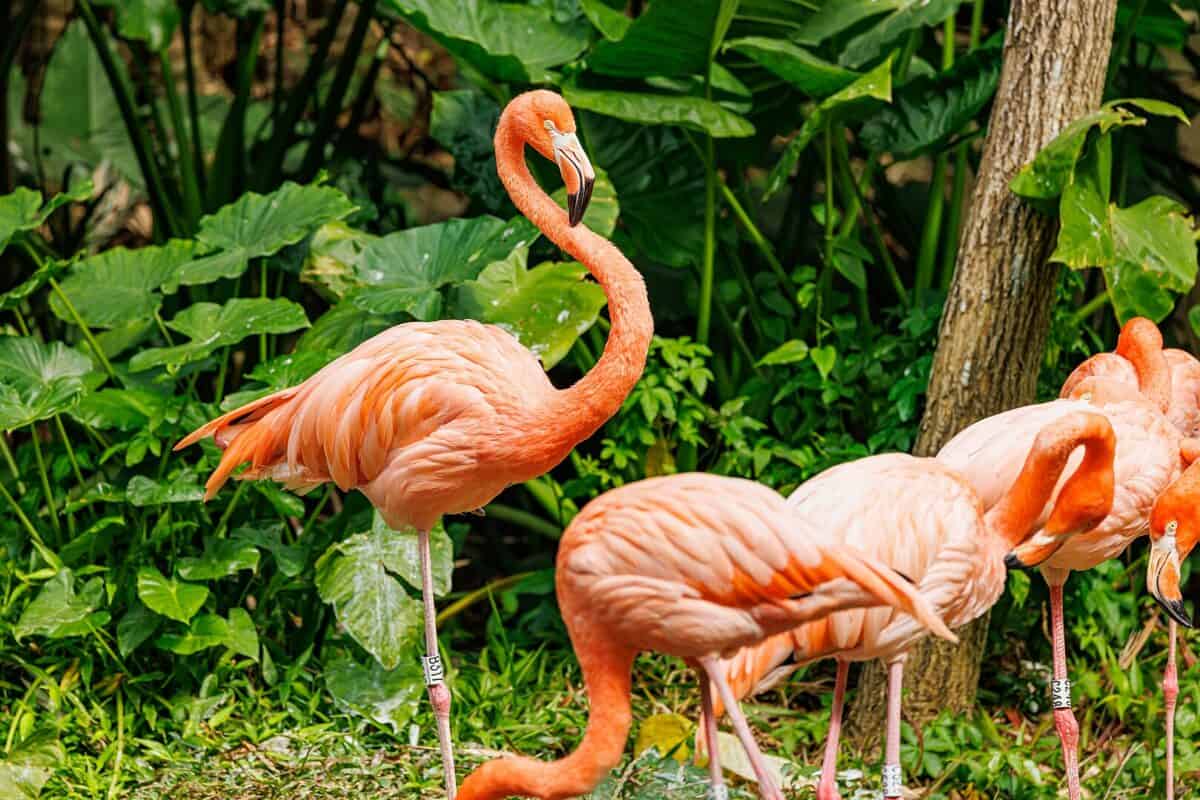
Flamingos are distinguished by their vivid plumage and long, thin necks, which are easily identifiable. These recognizable birds have adapted to their environment, consisting of saline or alkaline lakes and lagoons.
A vital function of the flamingo’s long neck is feeding. They utilize their specialized beaks to filter out minute creatures like algae, small crustaceans, and mollusks by bending their necks and turning their heads upside down in the water. Their necks, which can grow to a length of up to 1.5 meters, enable them to reach far beneath the water’s surface in search of food.
Additionally, because they move in unison with their partners during courtship displays, their necks contribute to the presentations by highlighting their grace and beauty.
5. Komodo Dragon

The largest lizard species on Earth, the komodo dragon, has a powerful and muscular neck that helps feed and hunt. Although they may not have particularly long necks, they are essential for lifting and maneuvering prey as it is being fed.
Komodo dragons have an unusual feeding method where they snag and pull apart pieces of meat using their long, graceful necks. Thanks to this adaptation, they may outnumber their prey, which mostly comprises small animals, birds, and carrion.
Additionally, the lengthened neck gives these magnificent reptiles greater mobility and agility, crucial for surviving in their harsh and difficult island surroundings.
6. Ostrich
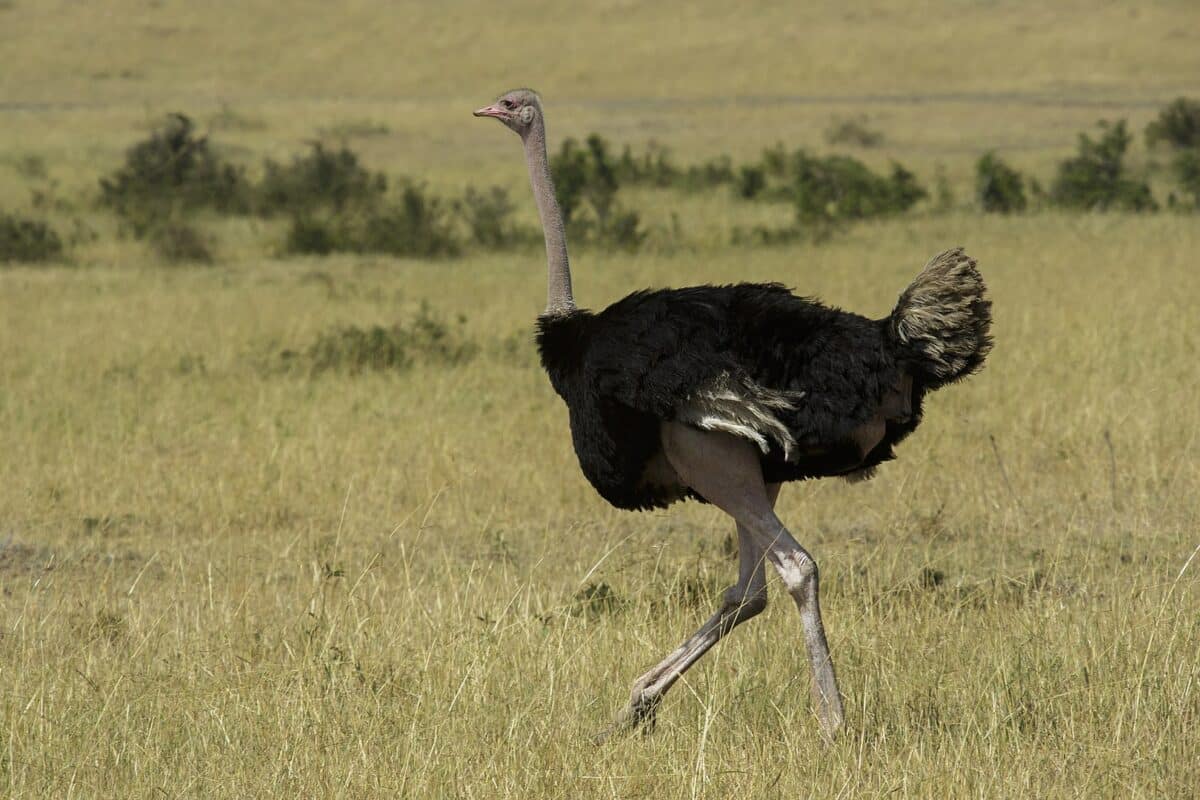
Known as the largest flightless bird in the world, the ostrich is distinguished by its remarkably long neck. With the aid of this adaptation, the ostrich can forage on vegetation in the African savannah while spotting predators from a distance.
With necks that may stretch up to 2.4 meters long, they have a wider field of vision to spot potential dangers. Additionally, ostriches show and communicate via their necks. Males perform elaborate dances during courting, impressively rising and swaying their necks.
The ostrich’s long neck displays these birds’ remarkable adaptations to survive in their many, frequently harsh surroundings.
7. Okapi
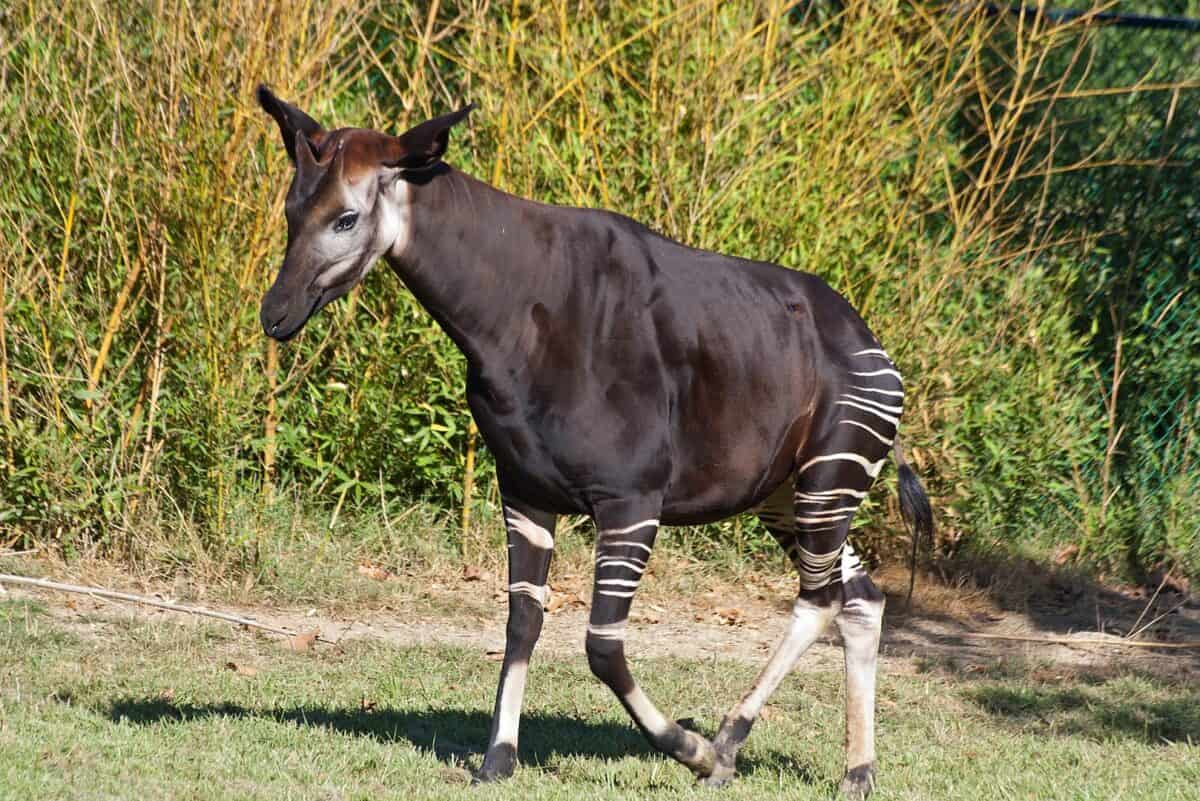
Found in the thick rainforests of Central Africa, the Okapi is an intriguing and less well-known animal. The Okapi, which resembles a cross between a giraffe and a zebra, has a long neck that makes it easier to browse leaves and fruits in the trees.
Their necks may extend between 14 and 18 inches, giving them access to foliage that is out of reach.
Okapis are adept in finding and consuming a variety of flora thanks to their excellent sense of smell and quick necks. They can move through their woodland home accurately and effectively thanks to their long necks and striped hindquarters.
8. Swan Goose
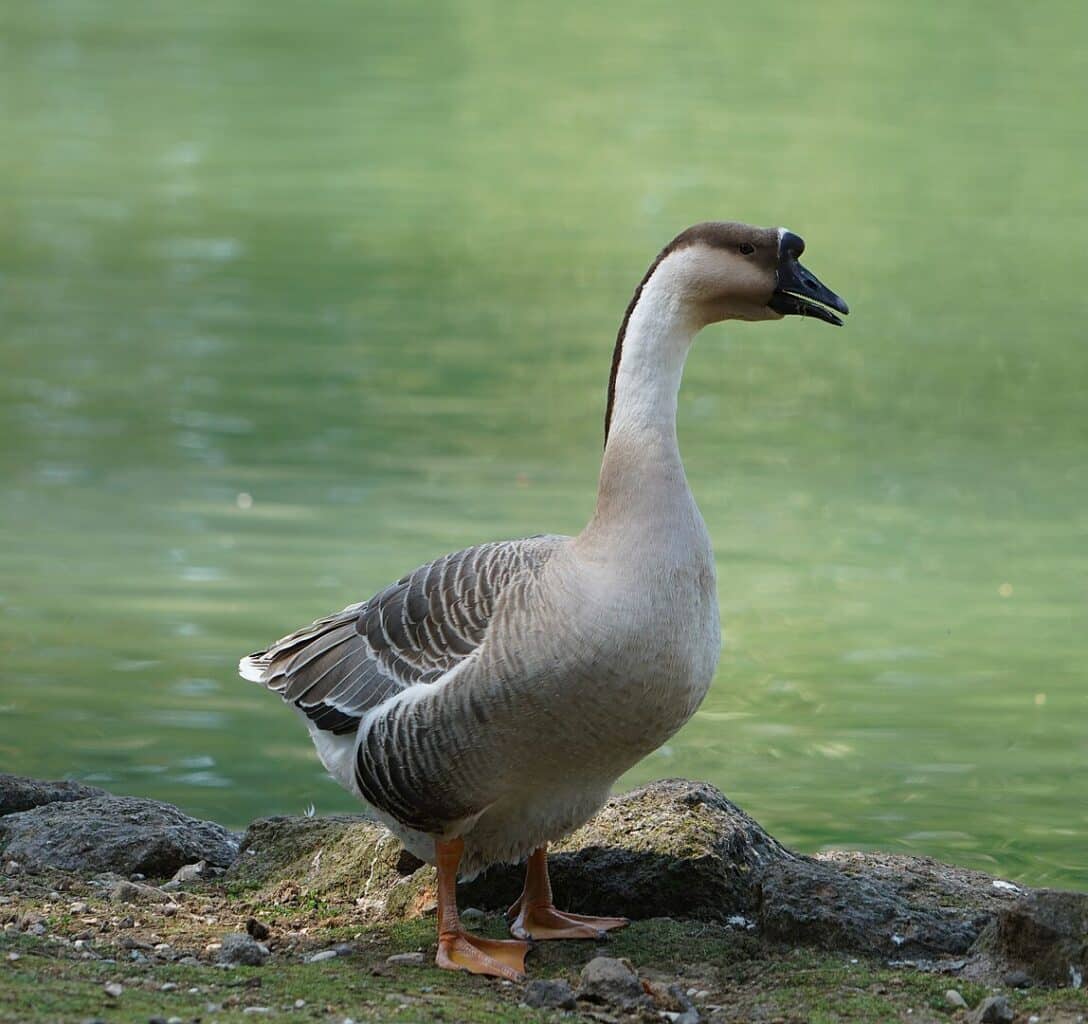
The amazing neck length of the Swan Goose, a sizable bird that is native to Asia, helps to explain its feeding preferences. These graceful waterfowl graze on grasses, aquatic plants, and other nearby flora with the help of their long necks.
Moreover, they can efficiently graze on sensitive shoots and leaves by extending their necks to reach submerged plants. Their lengthy necks provide them access to aquatic food sources beyond reach for other birds, enabling them to survive in wetland areas.
The Swan Goose’s long neck enhances the bird’s majestic and graceful appearance and visual attractiveness.
9. Dromedary Camel
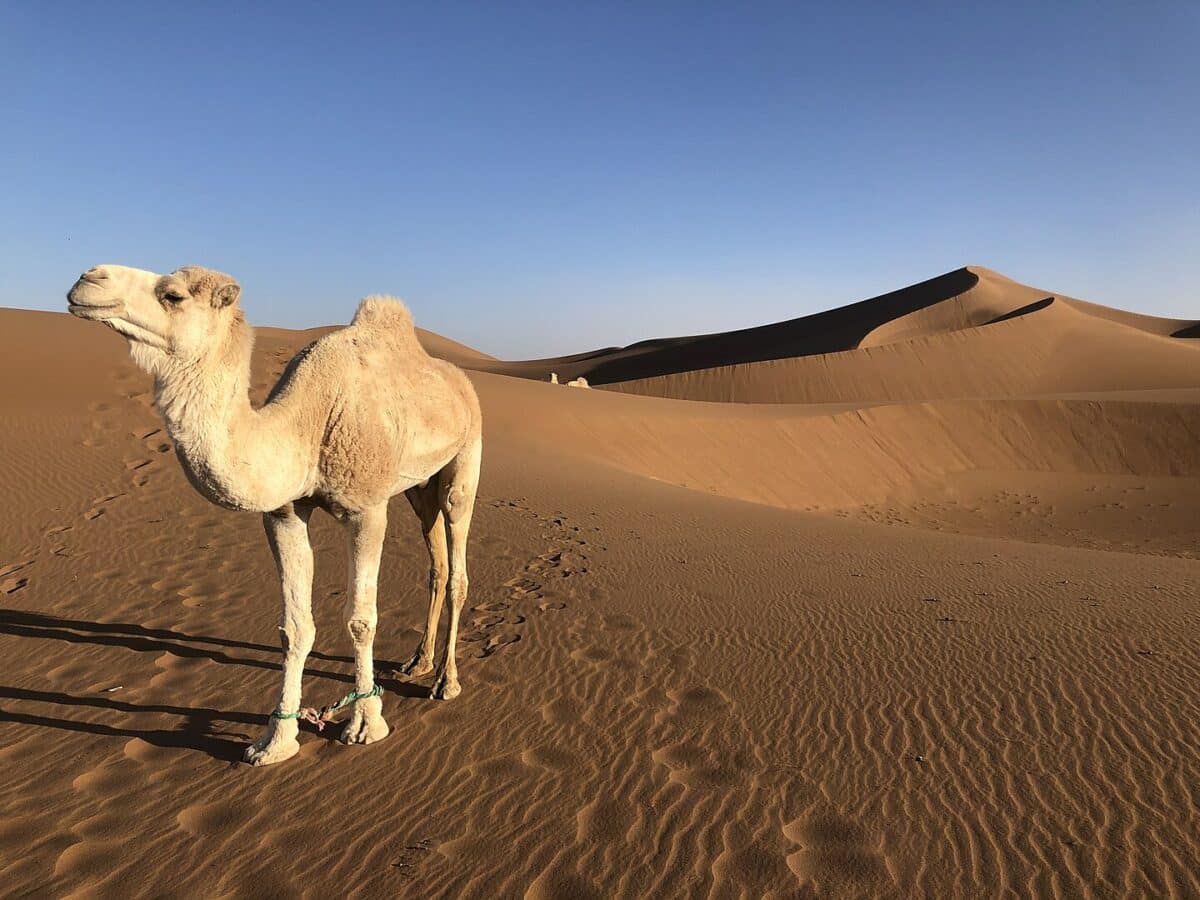
The Arabian Camel is renowned for its capacity to endure desert situations. The long, curving neck of these desert dwellers makes reaching leaves on tall tree branches easier for them.
Their necks can stretch up to 1.8 meters, giving them access to leaves and twigs that other herbivores cannot consume. The long neck is also very important for thermoregulation. Dromedary camels can raise and drop their necks to dissipate extra heat in the scorching desert environment, regulating body temperature.
They can navigate their difficult surroundings, get food, and endure harsh temperatures thanks to their amazing adaptability.
10. Indri
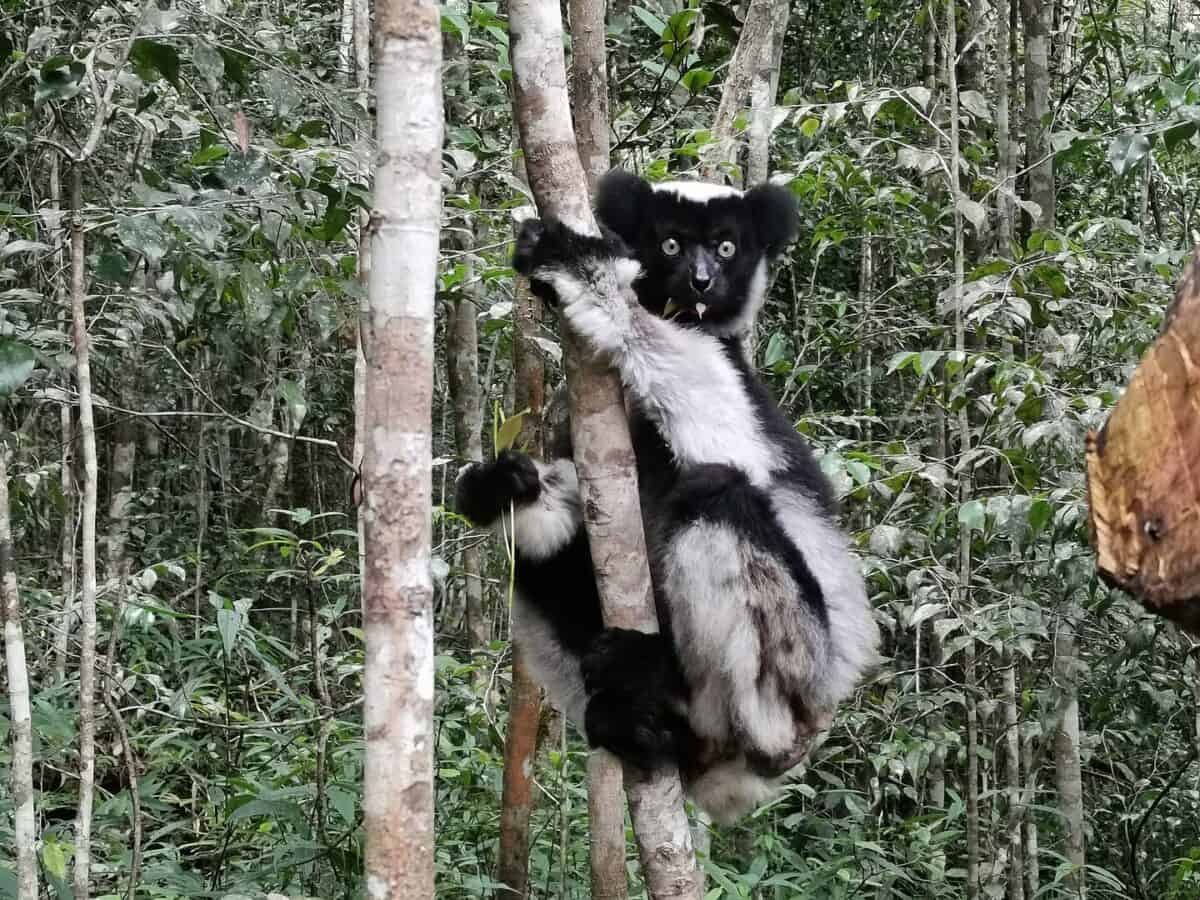
The Indri is a huge lemur species unique to Madagascar. It has an unusually long neck that helps it live in trees. Indris use their long necks to reach foliage high up in the trees and are renowned for their extraordinary vertical leaping skills.
With the use of their necks, they can selectively eat the leaves, flowers, and fruits that make up a large amount of their food. Their necks’ flexibility and length give them the benefit of reaching food sources in the rainforest’s uppermost canopy layers.
Because of their long necks and peculiar vocalizations, the Indri are an intriguing and distinctive species in Madagascar’s varied ecosystem.
Frequently Asked Questions
What is the advantage of having a long neck in animals?
Having a long neck offers several advantages for animals in their natural habitats. Firstly, it helps them reach food sources that may be either high up in trees or deep beneath the water’s surface. Giraffes, for example, have long necks that enable them to eat leaves from the tops of trees that other herbivores cannot reach. Secondly, a long neck can also help an animal defend itself by providing it with greater range to deliver a powerful blow to predators. Lastly, a long neck can also be useful in attracting mates for some species, such as male ostriches, which have long necks used to display their colorful feathers to impress females.
Which animals have the longest necks?
The animal with the longest neck, by far, is the giraffe, which can have a neck that is up to six feet long. However, several other animals have necks that are proportionally long compared to their body size, including the ostrich, which has a neck that can reach up to six feet in length, and the swan, which has a neck that is longer than its body. The saltwater crocodile is another animal that has a long neck, which can reach up to three feet, and helps it both capture its prey and survey its surroundings.
Is it true that humans have longer necks now than they did in the past?
There is no scientific evidence to suggest that humans have longer necks today than they did in the past. The length of the human neck is determined by a combination of factors, including genetics, environment, and lifestyle.
While it is possible that modern lifestyle changes, such as using computers, may lead to some postural changes that affect the neck, these changes are usually minor and unlikely to impact the length of the neck over evolutionary time. The human neck length has remained relatively constant over the past few thousand years, as it has not been under significant selective pressure compared to other traits.
The Bottom Line
The amazing adaptations of the animal realm never cease to astound us, and the long neck is unquestionably one of the most fascinating traits to have arisen.
Each species on this list, from the elegant Giraffe to the magnificent Swan, has mastered using a long neck for feeding, defense, or survival.
Exploring these amazing species not only increases our understanding of the wonders of evolution but also serves as a reminder of the limitless opportunities in nature’s rich tapestry.
If you enjoyed this article, read more on:
Top 10 Galápagos Islands Creatures
Discover the Fascinating World of Long-Neck Dinosaurs
Join our Forum for free today!

- Usain Bolt vs. Peregrine Falcon – Speed Test in Their Domains - May 18, 2024
- Top 10 Animals in Yellowstone National Park - April 12, 2024
- Top 10 Omnivores - March 9, 2024

